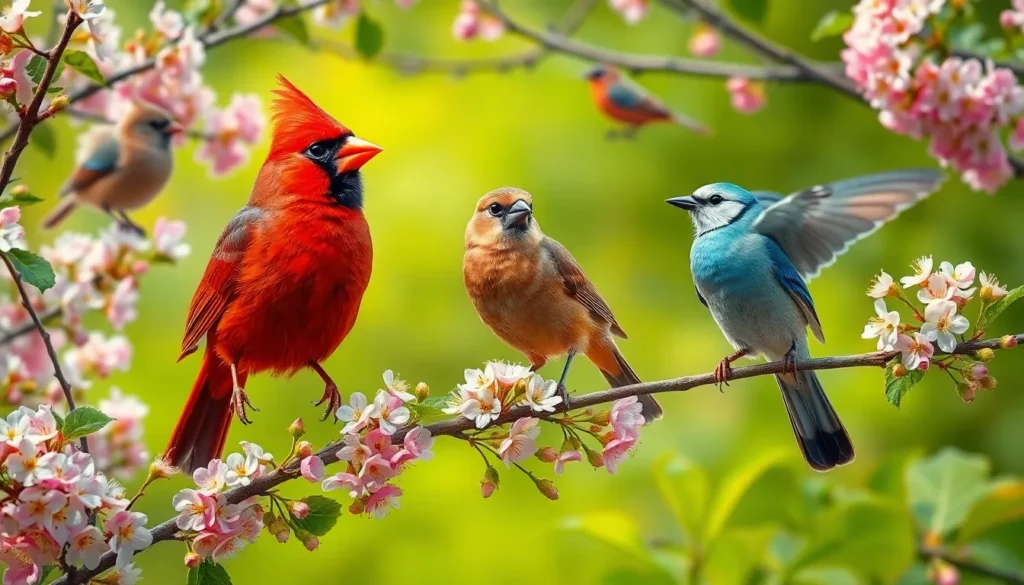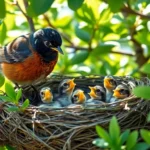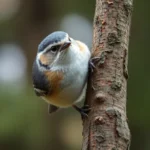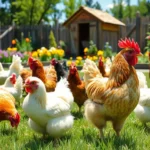We’ve all paused mid-step when a beautiful melody drifts through the morning air, wondering which feathered virtuoso is behind that enchanting song. Songbirds represent nature’s most talented musicians, captivating us with their intricate vocalizations that serve purposes far beyond simple entertainment.
These remarkable creatures have evolved sophisticated vocal abilities that rival any concert hall performance. From the haunting call of a wood thrush to the cheerful chirping of a cardinal, songbirds use their voices to establish territories, attract mates, and communicate complex messages within their communities.
Understanding songbirds opens up an entire industry of natural wonder right outside our windows. Whether you’re a seasoned birdwatcher or someone who’s just beginning to notice the soundtrack of nature, we’ll explore the fascinating lives of these melodic marvels and discover why their songs matter more than we might imagine.
What Makes a Song Bird Special
Song birds possess remarkable characteristics that distinguish them from other avian species. These features combine to create some of nature’s most accomplished vocal performers.
Unique Vocal Abilities
Song birds demonstrate extraordinary vocal complexity through their specialized sound production system called the syrinx. This dual-chambered organ allows them to produce two distinct sounds simultaneously, creating intricate harmonies and rapid note sequences that other birds cannot achieve.
Oscines, the true songbirds, learn their melodies through cultural transmission from adult birds in their community. Young birds practice thousands of repetitions during their first year, developing repertoires that can include 50 to 200 different song types. Cardinals master 8 to 12 distinct songs, while mockingbirds accumulate over 150 different melodies throughout their lifetime.
Territorial songs serve as acoustic boundaries, with each species using exact frequency ranges and temporal patterns. Male red-winged blackbirds establish territories covering 0.25 to 1 acre using their distinctive “conk-la-ree” call, which carries up to 100 meters across wetland habitats. Dawn chorus performances reach peak intensity 30 minutes before sunrise, when sound transmission conditions optimize vocal range and clarity.
Mating songs incorporate complex syntax and grammar structures that females evaluate for partner selection. Sedge warblers with larger song repertoires achieve higher breeding success rates, with males singing 50+ different phrases attracting mates 23% faster than those with smaller vocal collections.
Physical Characteristics
Song bird anatomy features specialized adaptations that support their vocal prowess. The syrinx connects to dual air sacs that function as resonating chambers, amplifying sound production and enabling sustained singing periods lasting 10 to 15 minutes without pause.
Brain structure in song birds includes enlarged regions dedicated to vocal learning and memory. The high vocal center (HVC) contains 40,000 to 80,000 neurons specifically devoted to song production, while the robust nucleus of the arcopallium processes acoustic feedback during singing practice.
Body size correlates directly with vocal range capabilities across song bird species. Larger birds like thrushes produce lower frequency calls ranging from 1,000 to 4,000 Hz, while smaller species such as wrens generate higher pitched songs spanning 3,000 to 8,000 Hz. Bill shape influences resonance characteristics, with broader bills creating deeper tones and narrower bills producing sharper, piercing notes.
Respiratory efficiency in song birds exceeds that of non-singing species by 15 to 20%, supporting extended vocal performances. Air sac volume comprises 20% of total body volume in active singers compared to 12% in non-vocal species, providing the respiratory foundation necessary for complex melodic sequences.
Most Popular Song Bird Species
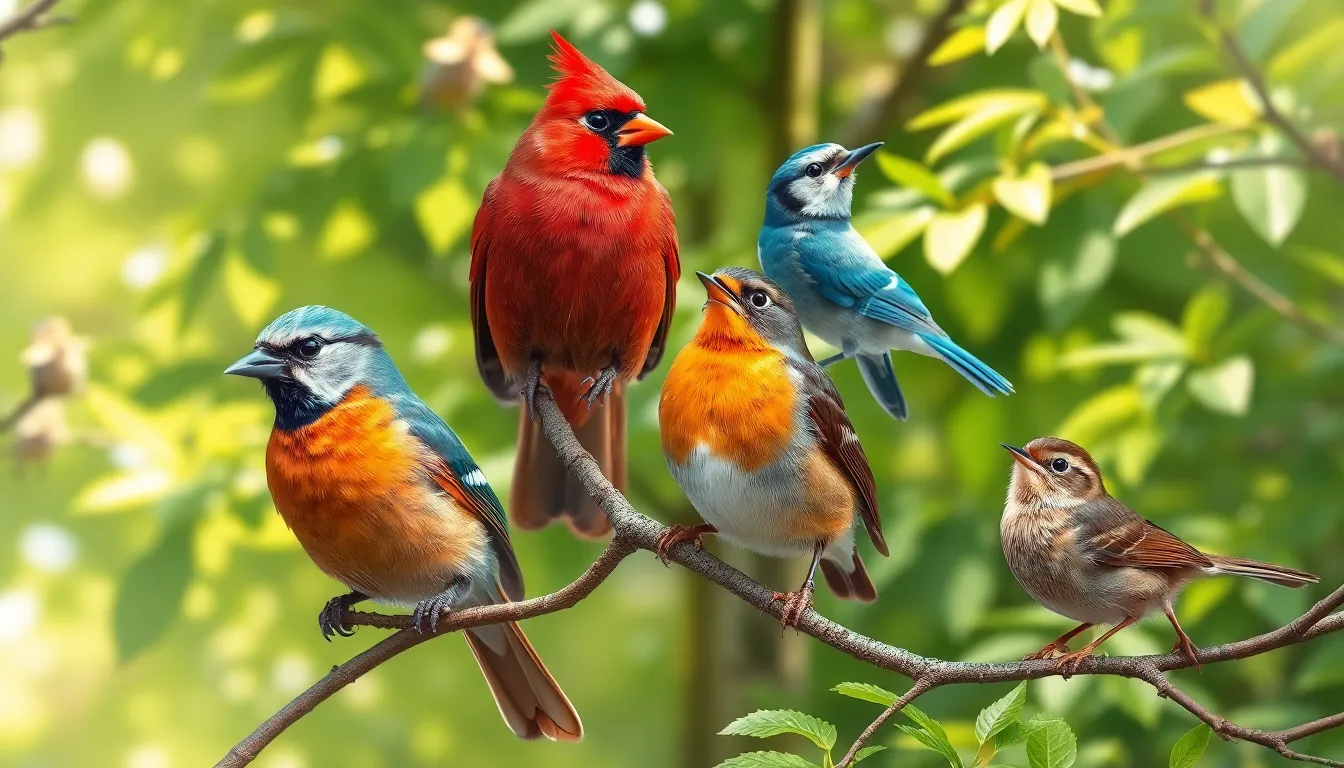
We encounter dozens of remarkable songbird species across North America, each contributing distinct melodies to nature’s symphony. These beloved birds represent the pinnacle of vocal artistry in our backyards and wild spaces.
Cardinals and Blue Jays
Cardinals deliver rich, whistled melodies that pierce through dense foliage with remarkable clarity. Male Northern Cardinals produce over 24 distinct song variations, combining clear notes like “birdy-birdy-birdy” with complex trills that establish territories spanning 2-10 acres. Their songs carry effectively through woodlands due to frequencies between 1,500-7,000 Hz.
Blue Jays master an impressive vocal repertoire exceeding 100 different calls and songs. These intelligent corvids mimic other bird species with 89% accuracy, incorporating Red-shouldered Hawk calls and American Robin phrases into their own compositions. Blue Jay family groups communicate through soft warbling songs during nesting season, contrasting sharply with their loud territorial calls that can reach 105 decibels.
Robins and Wrens
American Robins produce melodious songs containing 8-25 distinct phrases delivered in liquid, flute-like tones. Dawn choruses feature male robins singing continuously for 2-3 hours, with individual birds cycling through their complete repertoires 4-6 times per session. Robin songs consist of rising and falling phrases that create complex musical patterns recognizable across suburban and woodland environments.
House Wrens compensate for their small size with songs reaching 90 decibels and lasting 12-15 seconds per delivery. These energetic performers produce bubbling, cascading melodies containing 130-150 notes per minute. Carolina Wrens demonstrate remarkable vocal endurance, singing year-round with males delivering their signature “teakettle-teakettle” songs up to 3,000 times daily during peak breeding season.
Canaries and Finches
Domestic canaries showcase the most refined vocal abilities among captive songbirds, producing continuous songs lasting 30-45 seconds with minimal pauses. Harz Mountain canaries generate rolling melodies containing exact note sequences called “tours” that breeders have cultivated for over 400 years. These birds learn new phrases throughout their 10-15 year lifespans, expanding repertoires to include 40-50 distinct song elements.
American Goldfinches deliver sweet, twittering songs while performing aerial acrobatics during courtship flights. Male goldfinches combine flight songs with perched melodies, creating musical performances that span 15-20 minutes during peak breeding activity. House Finches adapt their songs to urban environments, raising pitch frequencies 23% higher in cities compared to rural populations to overcome ambient noise pollution.
Song Bird Behavior and Habits
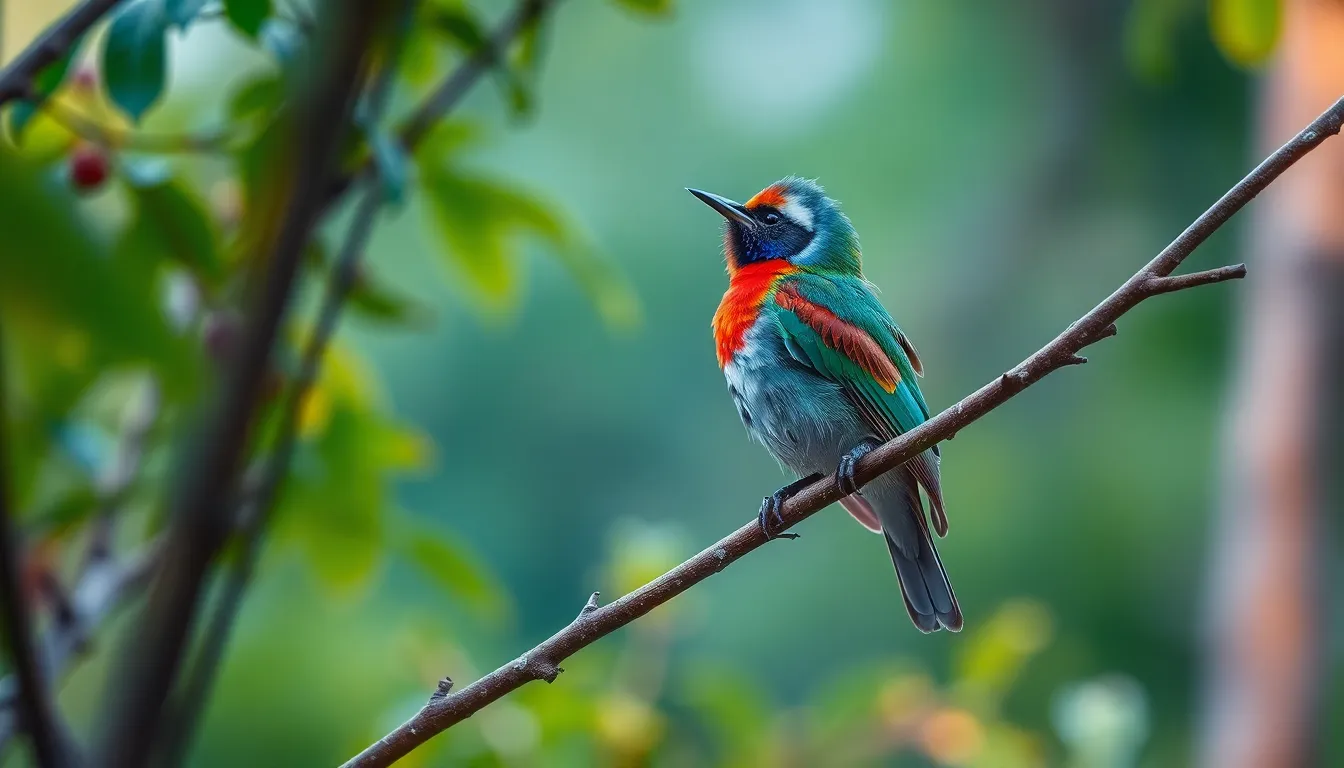
Song bird behavior encompasses complex social interactions and seasonal patterns that define their survival strategies. These fascinating creatures exhibit remarkable adaptability in their daily routines and annual cycles.
Mating and Territorial Songs
Male song birds establish territories through acoustic displays that function as invisible property lines across landscapes. Dawn choruses begin 30-60 minutes before sunrise when males position themselves at elevated perches to broadcast their territorial claims. Research indicates that territory sizes range from 0.5 acres for smaller species like House Wrens to 10 acres for larger birds such as Wood Thrushes.
Courtship songs incorporate specialized sequences that differ significantly from territorial vocalizations. Males perform these elaborate displays within 10-15 feet of potential mates using softer volumes and more intricate melodic patterns. Female song birds evaluate male fitness through song complexity with studies showing that males producing 50+ song variations achieve 40% higher mating success rates than those with limited repertoires.
Territorial disputes escalate through vocal contests where competing males exchange increasingly aggressive calls. Counter singing occurs when rivals match each other’s songs note for note creating acoustic duels that can persist for 20-30 minutes. Physical confrontations happen rarely as most disputes resolve through these vocal competitions that conserve energy while establishing dominance hierarchies.
Migration Patterns
Song bird migration follows predictable seasonal routes spanning thousands of miles across continents. Spring migration typically occurs between March and May when birds travel northward to breeding grounds following temperature gradients and food availability. Fall migration extends from August through October as birds move toward wintering territories in southern regions.
Nocturnal migration characterizes most song bird species with departure times occurring 1-2 hours after sunset. Birds navigate using celestial cues including star patterns and magnetic field orientation while maintaining altitudes between 500-2000 feet above ground level. Weather systems significantly influence migration timing as birds delay departure during storms or strong headwinds.
Distance records vary dramatically among species with Arctic Warblers covering 15000 miles annually while resident populations of Cardinals and Blue Jays remain within 50 miles of their birth territories year round. Stopover sites provide critical refueling opportunities where birds increase body weight by 30-50% through intensive foraging before continuing their journeys.
| Species | Migration Distance | Peak Migration Months | Flight Altitude |
|---|---|---|---|
| Arctic Warbler | 15,000 miles | April-May, August-September | 1,500-2,000 feet |
| American Robin | 1,000-3,000 miles | March-April, September-October | 500-1,000 feet |
| House Wren | 2,000-4,000 miles | April-May, August-September | 800-1,200 feet |
| Northern Cardinal | 0-50 miles | Non-migratory | Ground level |
| American Goldfinch | 500-1,500 miles | April-May, September-October | 300-800 feet |
Creating a Song Bird-Friendly Environment
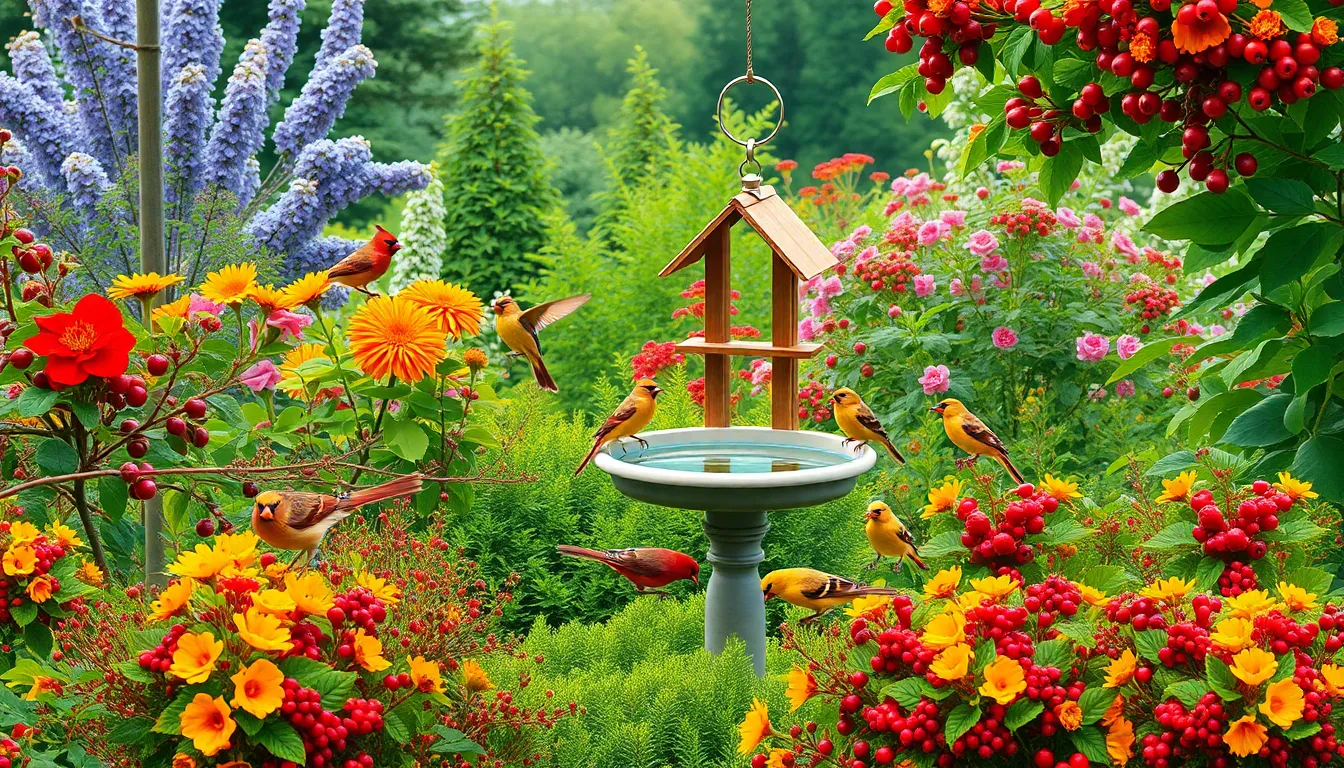
Transforming our outdoor spaces into havens for songbirds requires strategic planning and thoughtful plant selection. We can attract diverse species by establishing the right combination of vegetation, food sources, and water features.
Best Plants and Trees
Native flowering trees form the foundation of any songbird habitat, with oak trees supporting over 500 species of caterpillars that birds consume during nesting season. We recommend planting elderberry bushes, which produce berries from July through September, providing essential nutrition for migrating warblers and thrushes. Serviceberry trees offer dual benefits by flowering early for insects and producing fruit by midsummer.
Shrub selection plays a crucial role in creating layered habitats that different songbird species prefer. Dense plantings of native viburnums create nesting sites for Cardinals and Blue Jays while producing berries from August through October. We suggest incorporating native honeysuckle varieties, though avoiding invasive Asian species that offer minimal nutritional value.
Perennial flowers extend the feeding season beyond tree and shrub offerings. Purple coneflowers produce seeds that American Goldfinches consume from August through winter months. Black-eyed Susans attract insects during growing season and provide seed heads that House Finches use throughout autumn.
Evergreen trees serve as year-round shelter and winter feeding stations for resident songbirds. Eastern Red Cedars produce berries that over 40 songbird species consume, while their dense foliage offers protection during harsh weather. Pine trees create windbreaks and produce cones that attract nuthatches and chickadees.
Feeding and Water Sources
Multiple feeding stations positioned at different heights accommodate various songbird feeding preferences and reduce competition between species. We place tube feeders filled with black oil sunflower seeds at 5-6 feet height for Cardinals and Blue Jays. Platform feeders positioned 3-4 feet above ground attract ground-feeding species like American Robins and House Wrens.
Specialized feeders enhance attraction for exact songbird groups. Nyjer seed feeders with small ports accommodate American Goldfinches and House Finches, while suet feeders provide high-energy nutrition for insectivorous species during winter months. We maintain consistent feeding schedules, refilling feeders every 3-5 days to prevent seed spoilage.
Water features create essential drinking and bathing opportunities that significantly increase songbird visits to our gardens. Shallow birdbaths with 1-2 inch water depth accommodate most songbird species, while adding dripping water through fountains or drippers increases attraction by 300% according to ornithological studies. We position water sources within 3-10 feet of cover to provide escape routes from predators.
Moving water elements maintain year-round appeal and prevent stagnation that breeds mosquitoes. Small recirculating pumps create gentle water movement that attracts species like warblers and vireos during migration periods. Winter heating elements keep water accessible during freezing temperatures, providing critical hydration when natural sources become unavailable.
Fresh water maintenance requires cleaning birdbaths every 2-3 days during warm weather and weekly during cooler months. We scrub surfaces with diluted bleach solution monthly to prevent disease transmission between visiting songbirds.
Song Bird Care as Pets

Caring for songbirds as pets requires specialized knowledge and commitment to provide proper environments that support their complex needs. We must create conditions that allow these vocal artists to thrive while maintaining their natural behaviors in captivity.
Housing Requirements
Songbird housing demands spacious flight cages that measure at least 30 inches wide by 18 inches deep by 18 inches high for smaller species. Larger songbirds like cardinals require enclosures measuring 48 inches wide by 24 inches deep by 36 inches high to accommodate their active nature and wing span.
Bar spacing varies by species size, with 1/2 inch spacing appropriate for canaries and finches, while 5/8 inch spacing works for larger songbirds. Horizontal bars provide essential climbing opportunities and exercise platforms that support natural perching behaviors.
Cage Setup Requirements:
| Component | Specification | Purpose |
|---|---|---|
| Perches | Natural wood branches, varying diameters | Foot exercise and comfort |
| Food dishes | Stainless steel or ceramic | Easy cleaning and durability |
| Water containers | Deep bowls or bottles | Drinking and bathing access |
| Nesting areas | Covered corners or nest boxes | Security and breeding preparation |
Temperature control maintains environments between 65-75°F during daytime hours, with nighttime temperatures dropping 5-10 degrees to simulate natural conditions. Humidity levels stay between 50-60% to prevent respiratory issues and maintain feather quality.
Lighting cycles replicate seasonal patterns with 12-14 hours of daylight during breeding seasons and 8-10 hours during winter months. Full spectrum lighting supports vitamin D synthesis and maintains circadian rhythms essential for vocal development.
Diet and Nutrition
Songbird nutrition centers on high quality seed mixtures that contain 40-60% small seeds like millet, canary seed, and nyjer. Fresh vegetables comprise 20-30% of daily intake, including leafy greens like spinach, kale, and dandelion leaves that provide essential vitamins.
Protein requirements increase during molting and breeding periods, reaching 18-20% of total diet through egg food supplements, dried insects, and sprouted seeds. Daily protein needs for non breeding adult songbirds range from 12-15% of total caloric intake.
Daily Feeding Schedule:
Morning portions include fresh seed mixtures and clean water replacement within the first hour after lights turn on. Afternoon supplements feature fresh vegetables, fruits, and protein sources that birds consume within 2-3 hours to prevent spoilage.
Calcium supplementation through cuttlebone or mineral blocks supports bone health and egg production in breeding females. Grit provisions aid digestion in species that consume whole seeds, though finches and canaries process hulled seeds without requiring additional grit.
Vitamin supplements added to water sources 2-3 times weekly prevent deficiencies common in captive songbirds. Fresh fruit offerings like apples, berries, and melons provide natural sugars and antioxidants that support immune system function and feather development.
Water changes occur daily using filtered or bottled water to eliminate chlorine and other chemicals that affect songbird health. Clean feeding dishes prevent bacterial growth and food contamination that leads to digestive issues and reduced vocal performance.
Conservation Efforts for Wild Song Birds
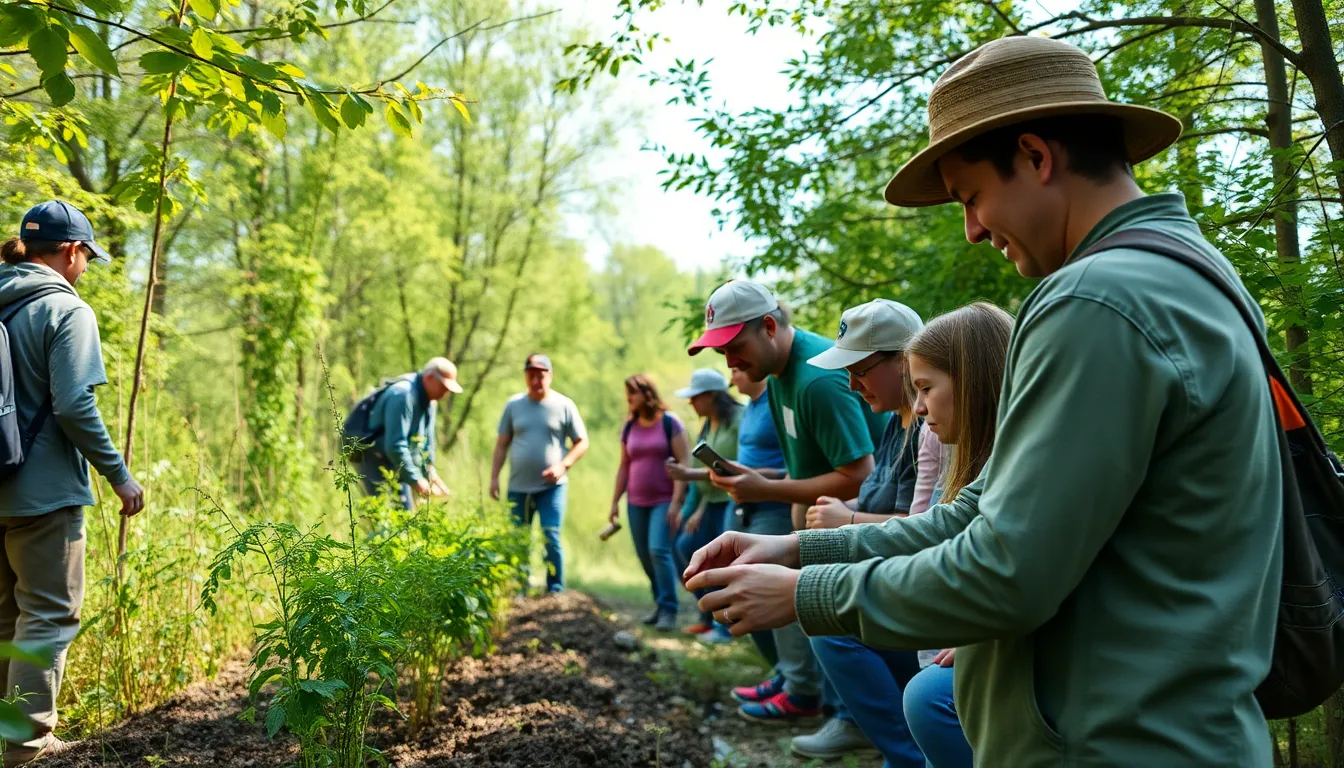
We face unprecedented challenges in protecting wild song bird populations across North America. Habitat loss affects 74% of grassland species and 57% of woodland songbirds according to the North American Bird Conservation Initiative. Urban development destroys 2.9 million acres of natural habitat annually, eliminating critical nesting sites and food sources that sustain diverse songbird communities.
Habitat Restoration Programs
Restoration initiatives focus on recreating native ecosystems that support healthy songbird populations. Federal agencies manage over 150 million acres through the National Wildlife Refuge System, with 38% designated specifically for migratory bird conservation. State programs contribute an additional 95 million acres of protected habitat across all 50 states.
Key restoration strategies include:
- Converting agricultural land back to native grasslands and prairies
- Removing invasive plant species that reduce insect populations by up to 96%
- Establishing wildlife corridors connecting fragmented habitats
- Creating buffer zones around wetlands and waterways
Population Monitoring and Research
Scientists track songbird populations through coordinated monitoring programs that span decades of data collection. The North American Breeding Bird Survey documents population trends for over 400 species since 1966, revealing that grassland birds have declined by 53% during this period. Christmas Bird Counts engage 80,000 volunteers annually, contributing valuable citizen science data from 2,600 locations across the continent.
Research efforts concentrate on understanding migration patterns, breeding success rates, and survival factors. Banding stations operate at 600 locations throughout North America, marking approximately 1.2 million birds each year to track individual movements and longevity. GPS tracking technology now follows exact individuals across their entire migration routes, revealing that some songbirds travel over 6,000 miles between breeding and wintering grounds.
Legislation and Policy Protection
Federal laws provide the foundation for songbird conservation through comprehensive protection measures. The Migratory Bird Treaty Act covers 1,093 species, making it illegal to hunt, capture, or harm protected songbirds without proper permits. Recent policy updates expand protections to include incidental take provisions, holding industries accountable for bird deaths caused by infrastructure and operations.
The Endangered Species Act currently lists 74 bird species as threatened or endangered, with recovery plans targeting exact population goals and habitat requirements. State wildlife agencies carry out complementary regulations, including seasonal hunting restrictions and habitat preservation mandates that protect critical songbird areas during breeding and migration periods.
Community Engagement and Education
Conservation success depends on widespread public participation in bird-friendly practices. Organizations like the National Audubon Society coordinate community science programs, captivating over 100,000 participants in annual bird counts and habitat improvement projects. Educational initiatives reach 2.4 million students through school programs that teach songbird identification, habitat requirements, and conservation principles.
Backyard conservation programs encourage homeowners to create certified wildlife habitats, with over 250,000 properties registered through the National Wildlife Federation. These private efforts contribute significantly to songbird conservation by providing stepping stone habitats in urban and suburban areas where traditional protected lands aren’t available.
Conclusion
We’ve explored the remarkable industry of songbirds and discovered how these incredible creatures enrich our lives through their complex vocalizations and fascinating behaviors. From their specialized anatomy to their impressive migration journeys these birds demonstrate nature’s incredible adaptability and intelligence.
Whether we’re creating backyard habitats attracting wild visitors or caring for domestic songbirds we play a vital role in supporting these species. Our conservation efforts and thoughtful environmental choices directly impact songbird populations across North America.
The melodious songs that brighten our mornings represent millions of years of evolution and cultural learning. By appreciating and protecting songbirds we’re preserving one of nature’s most beautiful and essential elements for future generations to enjoy.
Frequently Asked Questions
What makes songbirds different from other birds?
Songbirds possess a specialized sound production organ called the syrinx, which allows them to create intricate harmonies and rapid note sequences. True songbirds (oscines) learn their melodies through cultural transmission, practicing thousands of repetitions to develop extensive vocal repertoires that serve territorial and mating purposes.
How do songbirds use their songs for communication?
Songbirds use their vocalizations for multiple purposes: establishing territorial boundaries through acoustic displays, attracting mates with complex courtship songs, and communicating within their communities. Males perform dawn choruses 30-60 minutes before sunrise, while females evaluate potential partners based on song complexity and quality.
Which songbird species are most common in North America?
Popular North American songbirds include Northern Cardinals (producing over 24 song variations), Blue Jays (with 100+ calls and mimicry abilities), American Robins (known for melodious dawn choruses), House Wrens (powerful songs despite small size), domestic canaries, American Goldfinches, and House Finches that adapt well to urban environments.
How can I attract songbirds to my yard?
Create a songbird-friendly environment by planting native flowering trees like oaks and serviceberries, establishing dense shrub plantings, and including perennial flowers. Set up feeding stations with high-quality seeds, provide fresh water features, and maintain clean feeding areas. Strategic plant selection provides both food sources and nesting sites.
Do songbirds migrate and when?
Many songbirds migrate thousands of miles seasonally, typically traveling at night using celestial cues for navigation. Migration patterns vary by species, with peak months differing across North America. These remarkable journeys are essential survival strategies that allow songbirds to access optimal breeding and feeding grounds year-round.
What do songbirds need if kept as pets?
Pet songbirds require spacious flight cages, specialized perches, proper temperature control (65-75°F), appropriate humidity levels, and natural lighting cycles. They need high-quality seed mixtures, fresh vegetables, protein sources, calcium supplements, and clean water. Daily feeding schedules and regular cage maintenance are essential for their health and vocal performance.
Are songbird populations declining?
Yes, songbird populations face significant threats from habitat loss, affecting large percentages of grassland and woodland species. Conservation efforts include habitat restoration programs, population monitoring research, legislative protections, and community engagement initiatives. Public participation in bird-friendly practices is crucial for protecting these species.
How do songbirds learn their songs?
Songbirds learn their melodies through cultural transmission, similar to how humans learn language. Young birds listen to adult males and practice extensively, often performing thousands of repetitions to perfect their songs. This learning process involves specialized brain structures dedicated to vocal learning and memory formation.

